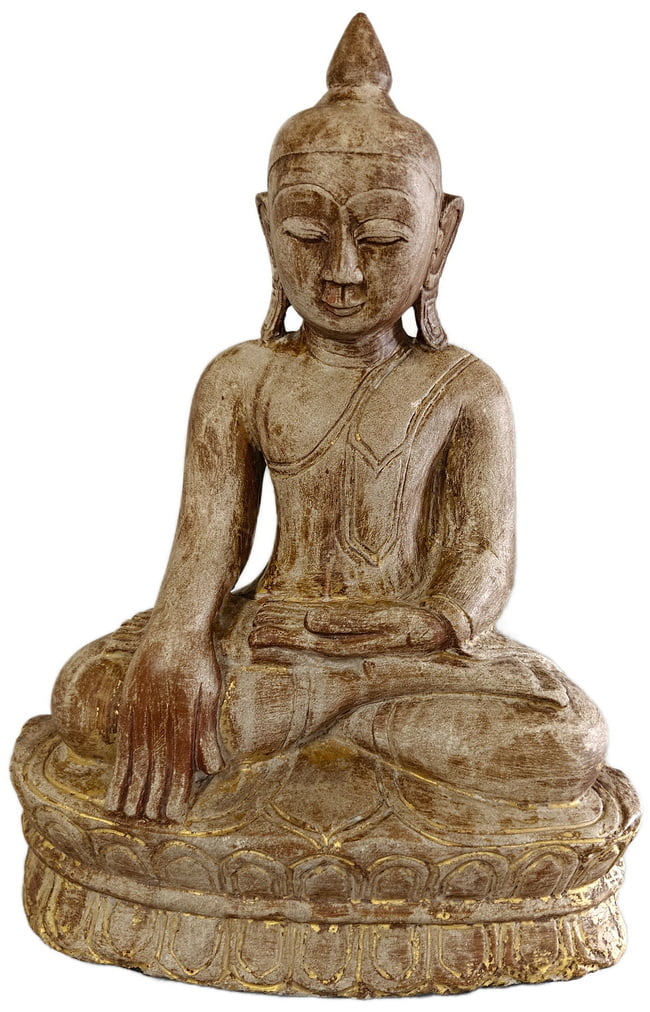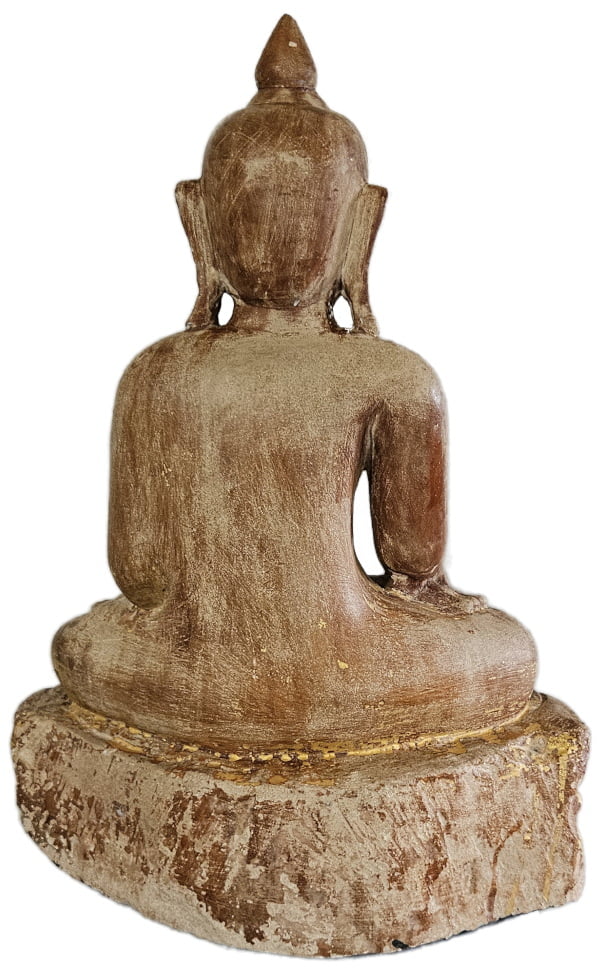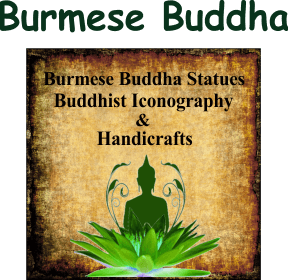Myanmar stone statues are generally made from alabaster or marble, those made from sandstone are rare this Antique Shan Sandstone Buddha Statue is similar to those seen in the Po Win Taung Cave Temples and Shwe Ba Taung in the Yinmarbin region of Sagaing in Myanmar, an area renowned for their extensive use of sandstone. These sites feature shallow niches and intricate carvings with richly decorated caves carved into a sandstone outcrop, containing numerous carved Buddha statues and mural paintings.
Read More
Although sandstone is available in Myanmar the possible reason for the lack of Buddha sculptures may be that sandstone is less durable in tropical climates and can deteriorate faster than other materials such as wood and marble, especially when exposed to the elements. The scarcity of sandstone Buddha statues may also be attributed to the historical periods and the regions where sandstone was more prominently used. For instance, the Pagan period saw significant use of sandstone in architecture and Buddhist sculptures
, many of these works have not withstood the test of time or have been relocated to protect them from environmental damage.
Although these sites have been known to be a Buddhist site serving as a place of worship for Buddhist monks and devotees since the 14th century many Buddha statues carved into the walls of the caves date between the 18th and 19th centuries. Pho Win Caves and Shwe Ba Taung highlight the presence of sandstone in Myanmar and its integral role in the cultural and historical context of the region.
The tradition of carving Buddha statues from sandstone in Burma, now known as Myanmar, dates back to ancient times and has evolved through various historical periods. The art of sculpting with stone, known as “Pantamault,” involves intricate carving, chiselling, and shaping of the stone to create revered Buddhist images.
Myanmar, formerly known as Burma, has a rich geological history that includes sandstone deposits. The Irrawaddy Sandstone, for instance, is a notable geological formation within the country, particularly in the Salin Basin. This sedimentary sequence is part of the Cretaceous geology of Myanmar and plays a significant role in the country’s stratigraphic framework. The formation of sandstone in this region is a result of fluvial deposition, meaning it was formed by river-related processes.
Myanmar’s complex geology reflects its dynamic tectonic setting, which has been influenced by the collision of the Indian Plate with the Burma Plate, with a variety of geological formations across different regions. The Central Myanmar Basin, where the Irrawaddy Sandstone is located, lies on the West Burma Block bordered by the Shan Plateau to the east and the Indo-Burma Ranges to the west. The Shan Plateau itself is characterized by a Cambrian–Triassic succession, which shows several different sedimentary rocks, among them sandstones.
The Mon people, one of the earliest civilizations in Myanmar, were known for their sophisticated art and architecture and were particularly noted for their remarkable achievements in the field of sculptures, especially using materials such as wood, stone, and plaster. Among these materials, sandstone stands out for the exquisite detail it allowed artisans to carve into it. Their sculptures often depicted Buddhist themes, with common images including Buddha statues, various figures associated with Buddhism, animals such as elephants and deer, and mythical creatures with roots in Indian mythology.
The sandstones used during the Mon period were part of the Pondaung Formation, characterized by their massive quartz composition. The weathered surfaces of these sandstones often appear brown, but they reveal a greenish tint when freshly cut, indicating their natural beauty and the skill required to work with such a material.
Referenced: Facts and Details – Burmese Sculptures







